Master Blaster: The Power of Music and Influence
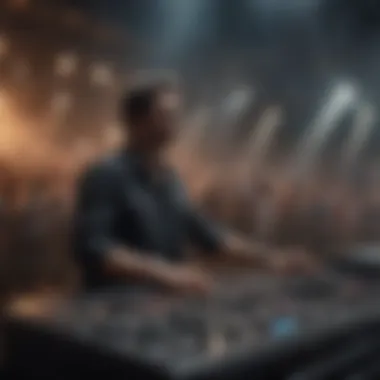
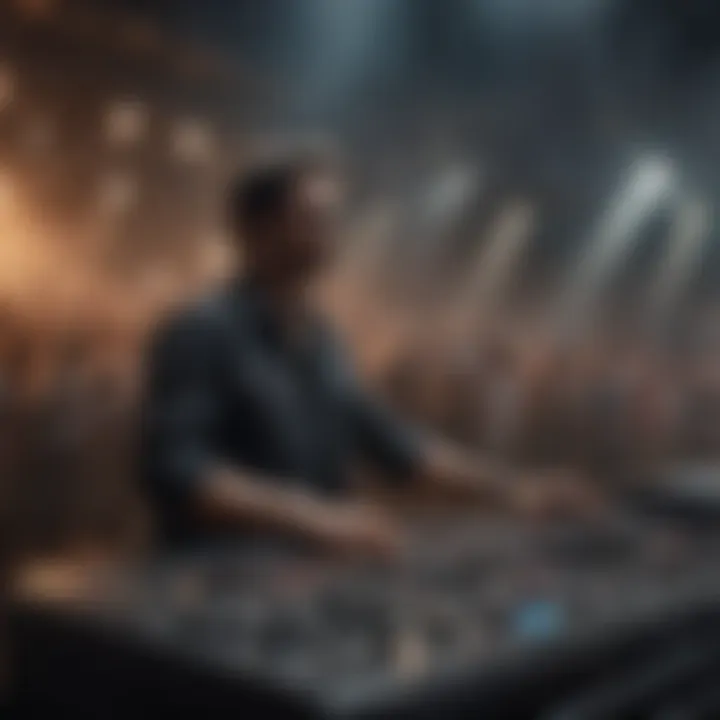
Intro
At the crossroads, we find ourselves with the term 'master blaster.' While it may sound like just a catchy phrase in music circles, its implications resonate deeper, often signifying prowess and a point of influence within the soundscape of our lives. This exploration embarks on a journey through its historical roots, dissecting how music has shaped cultures and vice versa. We’ll also take the time to profile artists, the lyricists, and the instrumentalists whose fervent passion and artistry bring this term truly to life.
Artist Profile
Biography and Background
Let’s take a closer look at some notable figures who exemplify the title of 'master blaster' in music. These are not just entertainers, but individuals whose biographies illustrate an unwavering commitment to excellence in their craft. For instance, consider musicians like Stevie Wonder or Bob Marley. Each of them has a rich, compelling background. Stevie, born in Saginaw, Michigan, lost his sight shortly after birth, yet went on to become a musical prodigy. Armed with a blend of soul, funk, and rhythm, he became a formidable influence on the landscape of contemporary music. Bob Marley, on the other hand, emerged from humble beginnings in Jamaica. His story, filled with struggles, mirrors the themes of hope and resilience that he so beautifully wove into reggae.
Major Influences and Inspirations
Often, the journey of a 'master blaster' is paved by the influences that shape their artistry.
- For Stevie Wonder, influences came from jazz legends like Duke Ellington and Ray Charles, but also from life experiences that drove him to weave personal tales into his music.
- Bob Marley found inspiration in the rhythms of Rastafarian culture, which heavily informed his notable lyrics about unity and freedom.
These artists did not merely follow in the footsteps of those who came before them; instead, they transformed their influences into catalysts for their own unique sounds. In this way, they encourage aspiring musicians to carve out their individual niches while honoring their inspirations.
Song Analysis
Theme and Lyrics Breakdown
Now, let’s delve into the thematic elements that pulsed within their music. The underlying messages often speak of social justice, love, and resilience. For example, Marley's "One Love" isn’t just a feel-good track, but a call to action for unity amongst all people. The lyrics encapsulate a spirit of harmony that transcends a singular experience, urging listeners to reflect and foster connections.
Stevie Wonder’s “Isn’t She Lovely” exemplifies another dimension—joy and celebration of life. It demonstrates that themes in music can span a myriad of emotions—from bliss to poignant reflections.
Instrumentation and Composition
The instrumentation in their works also plays a pivotal role. Wonder's use of synthesizers and harmonicas adds a distinct layer to his sound, making it both innovative and relatable. Similarly, Marley's incorporation of traditional reggae instrumentation—like the rhythm guitar and bass drum—creates a sound that feels distinctly rooted in the Caribbean.
"Music is the soundtrack of your life. To me, it’s about the impact it has—both culturally and personally."
— Unattributed Insight
Understanding the composition of their work gives listeners a deeper appreciation for the art form. It’s not simply about the notes played but the emotions conveyed through each chord, riff, and beat.
In examining these components, we not only appreciate the craftsmanship behind the music; we also uncover the very heart of what it means to be a 'master blaster'. As we continue, this exploration invites music enthusiasts, aspiring musicians, and keen students of sound to grasp the layers of influence and reflect upon their own musical journeys.
Preface to the Concept of Master Blaster
The term "Master Blaster" resonates deeply within the sphere of music, serving as a powerful label for those who have not only mastered their craft but also significantly influenced the industry and culture around them. This section paves the way for a comprehensive exploration of what it means to be a master in today’s musical landscape.
Understanding the concept goes beyond mere technical proficiency; it encompasses creativity, cultural impact, and a certain level of public resonance. When one thinks of a Master Blaster, it’s essential to appreciate the intricate layers of their influence, from songwriting to performance style. The term captures artists who command respect and admiration, shaping trends and inspiring upcoming talent.
Definition and Origin
The phrase "Master Blaster" has origins that intertwine with both musical and global influences. Initially, it emerged from a blend of early reggae and hip-hop culture, particularly through prominent figures who leveraged their music as a form of expression and rebellion. It reflects the essence of characters that dominate their fields with a kind of raw exuberance—think of it as the artistry that speaks volumes. Over time, the term has evolved, gaining traction across various genres, symbolizing not just skill but also a force of nature in musical expression.
While some may credit the title to specific artists, it is very much alive in the collective consciousness of music lovers, embodying the spirit of those who refuse to be sidelined by mediocrity in their craft. This richness makes it a fascinating term that invites curiosity and discussion about its rightful bearers.
Cultural Significance in Music
The cultural significance of Master Blasters in music transcends genres, influencing generations and communities. Think about artists whose music serves as a soundtrack for pivotal moments in people's lives—they become more than performers; they embody cultural figures. The importance of their contribution is often perceived through the lens of social movements and artistic revolutions.
Some of these artists have tackled societal injustices through their lyrics, shifting the conversation around difficult topics while connecting with audiences on an emotional level. Furthermore, the fusion of cultural elements within their music often leads to broader acceptance and understanding among diverse groups.
"Music is a universal language that transcends borders; a Master Blaster speaks that language fluently."
In essence, Master Blasters endure thanks to their ability to reflect, challenge, and inspire society. Their work highlights not just entertainment but a deeper connection to collective identity, thereby solidifying their status in the canon of musical greatness.
As we delve deeper into the historical context and various genres that share an affinity for this philosophy, it becomes apparent that the Master Blaster phenomenon is a cornerstone of musical evolution. It is a lens through which we can better appreciate music's role in society, and its ongoing impact on future artists.
Historical Context of Master Blaster
The concept of Master Blaster in music cannot be understood without diving into its historical context. It offers a rich landscape of influences and evolving styles that contribute to what we currently recognize as a master blaster. This exploration is not just about looking back at who made waves but understanding the currents that formed them. For music enthusiasts, aspiring musicians, and students, grasping historical contexts helps appreciate the artistry and evolution of music itself.
Roots in Early Music
To trace the roots of the Master Blaster phenomenon, we must step into the world of early musical forms. Historically, music has always been a vessel of expression, touching on the societal challenges, joys, and demands of the time. Traditional folk music serves as an excellent case in point. Tunes sung in fields or around fires often represented collective experiences shared by communities. This was the foundation; the raw expression of life laid the groundwork for the artists who would seek to redefine excellence and dominance.
In many cultures, musicians were revered figures. They held the power to influence emotions and provoke change through their art. For instance, the griots of West Africa were not mere entertainers; they served as historians, custodians of lore, and mediators of societal values. Their mastery did not just come from musical skills but from the cultural significance of their role. These early musicians exemplified what it means to be a Master Blaster in the true sense, possessing the ability to wield words and melodies as tools for social commentary and change.
Evolution Through Decades
Moving through the decades, we see that the Master Blaster concept began to take shape, influenced by technological advancements and societal shifts. The advent of the recording industry in the early 20th century transformed music's accessibility. Suddenly, brilliant D.J.s and singers could reach audiences far beyond their local towns. Jazz musicians in the 1920s, for instance, began mixing different sounds, styles, and cultures, creating not just a genre but a movement that could be likened to what we now recognize as the Master Blaster ethos.
Fast-forward to the 1960s and '70s, where rock and folk musicians began to point their lyrics towards protest and cultural movements. Bob Dylan’s songs became anthems of change, driving audiences to think critically about their society. Artists now embraced their roles not just as entertainers but as figures of impact, pushing societal boundaries and expectations.
The evolution continued in the following decades. Hip-hop emerged as a cultural revolution, intertwining rhythm and speech to address social injustices. Icons like Tupac Shakur and Notorious B.I.G. took the master blaster label to new heights, merging storytelling with artistry, allowing voices from the streets to resonate on global platforms.
To summarize, the historical context of Master Blaster is rich and layered. Each era contributed to the evolution, nurturing the artists who would define and redefine what it means to be a master in music. This background not only highlights the shifts in musical styles but also underscores how artists continue to operate as ambassadors of cultural change.
Genres That Embrace the Master Blaster Philosophy
The term "master blaster" rings true in various musical domains, each adopting a unique interpretation that enhances the entire landscape of music. Each genre weaves its own narrative and contributes distinct elements to the wider discourse of musical genius and influence. Within the realm of music, understanding how specific genres embody this philosophy reveals much about their cultural significance and impact.
Hip-Hop and the Master Blaster Persona
Hip-hop stands as a monumental pillar of the master blaster philosophy. This genre thrives on self-expression, where artists cultivate personas that resonate not just within the beats but also in the minds of their listeners. Master blasters in hip-hop harness their lyrical dexterity to voice social injustices, reflect lived experiences, and articulate aspirations.
Consider prominent figures like Kendrick Lamar and J. Cole—artists who use their platforms to challenge societal norms and inspire change. Their work encapsulates a rawness that captivates audiences, encouraging a sense of authenticity that is vital in this genre. Their mastery is not merely in their rhythm or rhyme, but in creating a dialogue that engages, evokes, and influences.
- Emphasizing narrative depth has become a hallmark of many hip-hop masters.
- Their ability to intertwine personal tales with broader cultural commentary elevates them beyond mere entertainers to influential social commentators.
- The genre itself thrives on collaboration, pushing artists to cross-pollinate styles, thereby expanding their impact.
Rock Icons as Master Blasters
Rock music, with its rebellious spirit and loud ethos, has produced a cadre of master blasters whose influence ripples through generations. Icons like Freddie Mercury and Jimi Hendrix did not just dominate charts; they revolutionized what it meant to be a musician. Their electrifying stage presence and powerful lyrics changed the face of music itself.
These artists tapped into raw emotion and crafted anthems of defiance and love, making them not only entertainers but figures of cultural significance.
- Evolution of Style: Rock is ever-changing, with each decade birthing new sub-genres. Artists like David Bowie blurred boundaries, challenging norms.
- Cultural Movement: Rock music has historically acted as the soundtrack to social movements, from anti-war protests to the fight for civil rights.
- Stagecraft and Performance: Master blasters in rock often invested as much energy into their live performances as they did in studio recordings, creating unforgettable experiences that solidified their legacy.
Pop Divas: Defining a Generation
When we look toward pop music, the master blaster philosophy takes on a different flavor. Pop divas from Madonna to Beyoncé have consistently redefined success, crafting identities that resonate deeply with their audience. Their mastery lies not only in catchy hooks and choreographed performances but also in their ability to influence popular culture at large.
These artists mold public perception and often tackle significant themes—from female empowerment to mental health—through their music.
- Cultural Iconography: Pop divas have utilized their status to burn brighter than just entertainers; they become symbols, often leading and defining cultural narratives.
- Collaboration and Innovation: They are known for blending genres and collaborating with artists across the spectrum, alongside experimenting with new multimedia forms to reach broader audiences.
- Globalization of Music: In our interconnected world, pop divas also reflect the blending of cultures, bringing diverse sounds and styles into the mainstream.
"Music is the universal language of mankind." – Henry Wadsworth Longfellow
Notable Figures in the Master Blaster Sphere
When discussing the world of music through the lens of the master blaster concept, one cannot overlook the notable figures who embody the essence of excellence and impact. These musicians not only set the tone for their respective genres but also challenge societal norms and inspire countless fans across generations. The importance of examining this section lies in understanding how these artists lend credibility to the master blaster notion, shaping not only the music industry but also cultural conversations around identity, creativity, and expression.
Musical Innovators and Their Influence
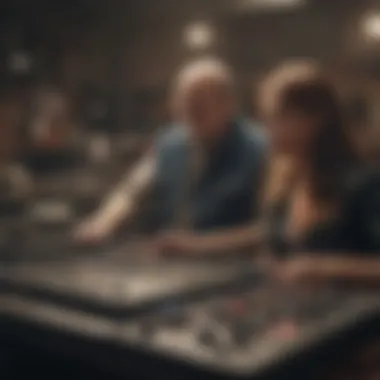
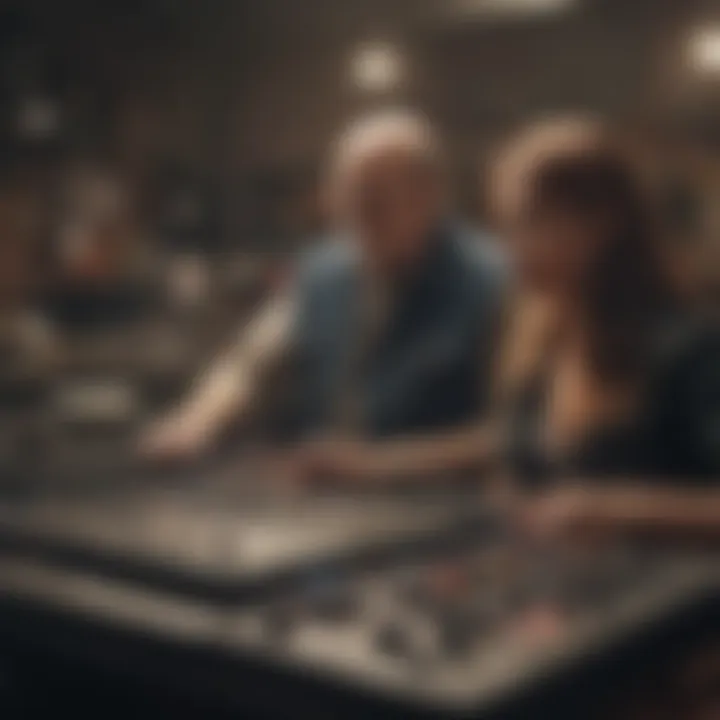
Exceptional artists have an uncanny ability to break boundaries. When they enter the scene, it’s like a fresh breeze rolling through a crowded room. Take Prince, for instance. His unique blend of rock, funk, and pop not only redefined genre limits but also allowed for deeper exploration of themes like sexuality and racial fluidity. He wasn't merely an artist; he was an innovator, a pioneer whose influence resonates today, demonstrating that true artistry knows no bounds.
Another powerful example is Beyoncé. She has transcended the label of just a pop singer. With her music, she engages with social justice issues, empowers women, and maintains a keen awareness of the cultural zeitgeist. Her work not only influences fans but also urges fellow artists to elevate their craft, prompting them to consider the greater impact of their art. Through collaboration and community, these figures enrich the musical landscape, standing as testaments to the power of creativity and vision.
Case Studies of Master Blasters
Artist A: Transformative Impact
One of the standout titans in this realm is David Bowie, whose transformative impact on music and culture is undeniable. Bowie didn’t just ride the waves of change; he created them. His ability to shift personas—from Ziggy Stardust to the Thin White Duke—showcases a key characteristic of being a master blaster: adaptability.
This adaptability made Bowie a beneficial choice for this article, exemplifying how an artist can evolve while retaining relevance. His influence on glam rock, electronic, and pop music allows him to maintain a timeless essence. The unique feature of his career was not just the sounds he created but how he pushed boundaries in terms of gender identity and artistic expression, allowing others to feel liberated in their own self-exploration. However, one can argue that his constant reinvention posed risks, particularly in the eyes of more traditionalist audiences. Nevertheless, his legacy continues to inspire new generations of artists breaking molds.
Artist B: Cultural Touchstones
Madonna serves as another compelling case study, reinforcing her status as a cultural touchstone over the decades. With her adventurous spirit, she has embraced various musical styles including pop, dance, and electronic, all while advocating for social issues such as LGBTQ rights and gender equality. What sets her apart is her uncanny ability to merge art with activism, which often resonates deeply with audiences worldwide.
Madonna's unique feature lies in her fearless pursuit of reinvention while maintaining a strong sense of self-awareness, which is crucial for longevity in the music business. This relentless pursuit keeps her relevant, engaging, and in tune with shifting cultural dynamics. It’s compelling to consider how her approach to music and cultural commentary serves as both an advantage and a disadvantage. Some critics argue that her incessant need to stay at the forefront can come off as overly sensationalized. Yet, the brilliance of her work inspires countless fans and artists alike to embrace their individuality and voice, solidifying her legacy as a master blaster.
"The success of these artists lies not just in their music, but also in their ability to provoke thought and inspire change in society."
Understanding these notable figures helps delineate the fine line between mere popularity and true influence. They demonstrate that the labels of 'master blasters' do not only belong to those who achieve chart-topping success but also to those whose artistry leaves an indelible mark on culture.
The Role of Technology in Shaping Master Blasters
The landscape of music has undergone a dramatic transformation over the years, particularly with the advent of technology. This aspect is pivotal in understanding the Master Blaster phenomenon. Essentially, technology serves as the backbone for artists who aspire to attain prominence in the music industry today. Through easily accessible tools and resources, musicians can not only create but also distribute their work on a global scale.
In today’s world, it’s crucial for musicians to harness technology effectively to carve out their niche. The convergence of creativity and technology creates opportunities that were once unimaginable. Here, we shall explore two significant components of this evolving dynamic: digital landscapes and music distribution, along with social media influence on stardom.
Digital Landscapes and Music Distribution
Music distribution has been revolutionized by digital platforms. Streaming services like Spotify and Apple Music have fundamentally changed how listeners consume music. Unlike past decades when radio dominated, today’s consumers are in charge. They can discover new tunes, reconnect with old favorites, and explore diverse genres—all with a few taps on their smartphone screens.
- Accessibility: It's an open field now. Independent artists can publish their work without needing a record label's backing. Tools such as Bandcamp and SoundCloud allow them to reach a wide audience directly.
- Data Insights: Artists can analyze their listenership through analytics offered by these platforms. This data helps in shaping marketing strategies, making informed decisions about tours, and improving engagement with fans.
- Cost-Efficiency: Setting up a home studio requires much less investment than it used to. With software like GarageBand or Ableton Live, one doesn't need to break the bank to produce high-quality tracks.
As we reflect on these digital avenues, it's evident that the accessibility and tools available to musicians have dismantled conventional barriers, thus allowing more voices to be heard.
Social Media Influence on Stardom
Social media platforms have emerged as a double-edged sword for aspiring artists. On one hand, they provide a rich territory for promotion; on the other, they pose challenges in terms of maintaining relevance in a fast-paced environment.
- Building a Brand: Artists can curate their image and brand on platforms like Instagram, YouTube, and TikTok. Engaging content can turn a simple demo into a viral sensation overnight. For instance, short clips on TikTok have launched numerous songs to commercial success, demonstrating the platform's role in shaping musical trends.
- Direct Engagement: No longer are artists distant figures; they can now build a rapport with fans directly, answering questions and responding to comments. This personal touch fosters a dedicated fan base that feels involved in the journey of the artist.
- Collaborations: The ease of connecting with other musicians globally opens avenues for partnerships that can cross geographical and cultural barriers. Sketching ideas and sharing riffs has never been easier than with tools like Zoom or collaboration apps.
"The internet is a musician's wild frontier; the possibilities are as vast as your imagination."
The Master Blaster Phenomenon in Global Music
The master blaster concept in global music represents a powerful intersection of skill, innovation, and cultural relevance. This term not only captures the popularity of certain artists but also reflects how their music generates significant impact across various audiences.
At its core, the phenomenon signifies a musical authority transcending geographical boundaries, making it a vital topic in understanding contemporary music dynamics. It emphasizes not just the artist's talent but their ability to resonate with diverse groups, thereby influencing music trends across the globe.
Regional Variations of Master Blaster Figures
When examining the master blaster phenomenon, one cannot overlook the regional variations that enrich this concept. Different cultures have their own interpretations of what it takes to be a master in music.
- North America: Here, figures like Jay-Z or Beyoncé epitomize the master blaster archetype. Their influence extends beyond music into fashion, politics, and social movements.
- Africa: Artists such as Burna Boy have revitalized traditional sounds, integrating Afrobeats into the global music scene while maintaining cultural integrity.
- Latin America: The rise of reggaeton with artists like Bad Bunny highlights a distinctive blend of genres, showcasing a unique take on the master blaster philosophy.
This regional diversity highlights that excellence doesn’t wear a single hat; it wears many. Artists adapt their sounds and messages, creating a global tapestry of music that influences and reflects their cultural identities.
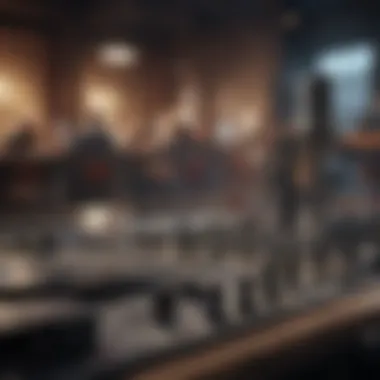

Cross-Cultural Influences and Collaborations
Moreover, the collaboration of artists across different cultures further underscores the master blaster concept. Cross-cultural influences can produce extraordinary music that blends genres and broadens horizons.
An example of this is the partnership between American artist, Justin Bieber, and Brazilian singer, Anitta. Their collaboration resulted in a catchy tune that garnered attention in both the Western and Latin music scenes. By fusing different styles and working together, they created something that resonates with a wider audience.
Here are some notable collaborations:
- Drake and Wizkid: Their track “One Dance” brought Afrobeats to a global stage, showcasing the genre's appeal.
- Shakira and Rihanna: The song “Can’t Remember to Forget You” melds pop with reggae influences, underlining the master blaster spirit.
"In today’s music landscape, collaboration knows no borders. It's all about blending, sharing, and creating a new sound that speaks to universal themes."
Collaborations like these not only amplify the reach of artists but also contribute to a rich cultural exchange, making the idea of the master blaster more complex and inclusive.
The master blaster phenomenon isn't static. It evolves with new sounds, rising talents, and cultural shifts, exhibiting a vibrant depiction of how music connects us all.
Master Blaster: A Lens for Understanding Music Trends
The concept of the master blaster serves as a potent lens through which to examine the evolution of musical trends. This framework doesn't just highlight the individual artist's prowess; it also illustrates how their influence can ripple across genres, shapes, and cultures. When we consider the impact of master blasters, we are essentially discussing how they manage to resonate not just with their audience, but also with other artists and mediums they touch.
In today’s musical landscape, characterized by rapid shifts and innovations, it becomes imperative to analyze how the master blaster phenomenon helps in understanding genre-crossing and cultural dynamics. Artists who embody this title often do not limit themselves to one sound or style. Instead, they blend genres, creating mashups that could only be born from such cross-pollination of ideas. This cultural exchange nurtures a rich tapestry of music that defies conventional classification and brings a truly global perspective to art.
Analyzing Genre Cross-Pollination
When we take a closer look at genre cross-pollination, it’s evident that master blasters have played a crucial role in this intertwining of musical boundaries. Consider artists like Kanye West, who seamlessly merges hip-hop with electronic sounds, or Jay-Z, who has incorporated elements of rock and jazz into his repertoire. These artists don’t just exist within a single genre; they push the envelope, attracting followers from diverse musical backgrounds and inventing new pathways for collaboration.
- A few key characteristics of this genre blending include:
- Innovative Collaborations: Collaborations like Jay-Z and Linkin Park in their mashup album Collision Course exemplify how two distinct styles can complement each other, thus attracting fans from both sides.
- Influence on Emerging Genres: Master blasters often give rise to entirely new genres. Reggaeton, for instance, emerged from the blend of reggae, dancehall, and hip-hop elements.
- Audience Expansion: By borrowing elements from other genres, these artists reach broader audiences. Latina star Shakira borrowed from rock and pop, which helped secure her place in numerous global charts.
This trend of merging sounds underscores the collaborative nature of the industry today, where artists are often inspired by cultural nuances rather than rigid definitions of genre. As they champion this evolution, they enable listeners to appreciate music in a more inclusive manner.
Youth Culture and the Master Blaster Influence
The youth culture is a critical factor to consider when discussing the master blaster phenomenon. Today’s younger generations are shaped by the digital age, where music is not confined by geographic boundaries. Platforms like TikTok or Spotify serve as the new radio, allowing artists to connect with youth faster than ever before. The artists who dominate these spaces tend to embody the master blaster ethos.
- Key aspects of this dynamic influence include:
- Social Media Platforms: Artists like Billie Eilish have utilized social media to engage young fans directly, allowing them to contribute to an artist's narrative. Her sound, deeply rooted in a blend of pop, alternative, and electronic music, resonates particularly well with today's youth.
- Activism and Social Commentary: Many master blasters take strong stances on social issues, influencing their listeners to engage with these topics. They become more than entertainers; they become voices for change, shaping the values and perspectives of younger audiences.
- Trends and Fads: The production quality and themes of master blaster songs often set trends that younger artists want to imitate. The influence of Drake’s emotional lyricism can be seen in pop music today, where vulnerability becomes part of the art.
The evolving role of a master blaster is not merely to entertain but to catalyze discussions and foster movements that resonate deeply with youth culture.
Ending: The Enduring Legacy of Master Blasters
The concept of a master blaster in music transcends mere talent. It's an amalgamation of skill, impact, and cultural resonance. As we've navigated through the various dimensions of this term, it becomes clear that the legacy of master blasters isn't just about records sold or awards won; it's about shaping the very fabric of the music industry and society at large.
Across genres, these standout figures weave narratives that resonate deeply with audiences. Their influences often ripple through generations, reflecting societal changes, personal struggles, and larger cultural movements. When we think of artists who fit this mold, we need to recognize not only their genius but also their role as cultural commentators and change agents. The stories told through their music often encapsulate the aspirations, dreams, and challenges of real-life experiences.
Reflections on Impact and Cultural Relevance
The impact of master blasters is manifold. They spur conversations about identity, race, and belonging, while illuminating paths for others to follow. For instance, consider how artists like Prince broke norms with their fearless expressions of gender and sexuality in the media. Similarly, Beyoncé has continually used her platform to highlight issues of race and feminism, making her not just a performer, but a beacon of change. The cultural relevance of these artists lies in their ability to stir emotions and provoke thoughts. They are not content with merely entertaining; they aim to educate and inspire.
Moreover, the contributions of master blasters often reach beyond the border of music. They influence fashion, social movements, and even language. When a line from a song infiltrates everyday conversation, or an artist's style becomes a trend, you see the true power of their influence. It demonstrates how music serves as both a vehicle for personal expression and a means for societal dialogue.
"Music is a reflection of us; it captures our essence and carves out spaces for marginalized voices."
Future Perspectives for Aspiring Artists
As we ponder the future for aspiring musicians yearning to make their mark, the lessons gleaned from master blasters are invaluable. One key takeaway is the importance of authenticity. In a world dominated by social media and fast trends, remaining true to one's voice can be a challenge, yet it is essential. Those who bravely showcase their individuality often attract the most genuine connections with their audiences.
Moreover, aspiring artists would do well to embrace collaboration. History reveals that many master blasters rose through strategic alliances, fusing styles and ideas. This cross-pollination can lead to innovative sounds that not only capture attention but also create lasting legacies. Collaborating with artists from different backgrounds cultivates an environment ripe for creativity.
Finally, technological literacy is a crucial skill for the next generation of musicians. Understanding platforms that amplify one’s work can empower new artists to carve out their niches in the crowded music landscape. As streaming platforms and social media reshape how music is distributed, those who harness these tools will be at the forefront of musical evolution.
In closing, the journey of a master blaster is not only about the individual—it’s a collective narrative of cultural history, ambition, and resilience. The mantle of master blaster comes with the responsibility of influence, and the legacy left behind can inspire and ignite the passions of future generations.







